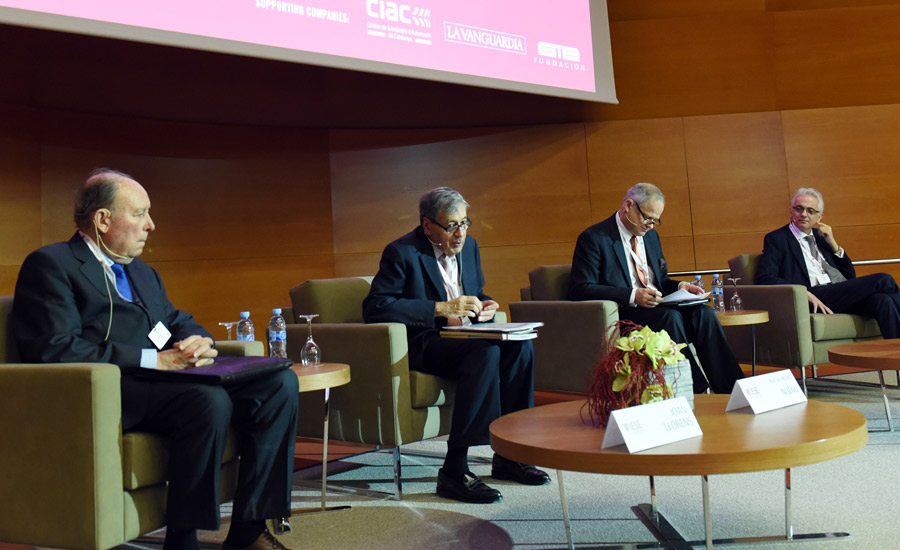
“You have to work on what makes you special.” This is the view of Luca de Meo, president of Seat, who asserts that the future of car manufacturers hinges on brand differentiation and sustainable competitive edge.
“The major brands are based on a clear sense of purpose, on teams with the conviction that they're creating something unique, and better than anybody else does,” he said. The key, he added, is to identify “what we can be the best at” and “what it is that makes us genuinely special in the eyes of the vast majority of consumers.”
Seat is currently endeavoring to do just that. “My priority is to work with my team to develop something relevant to customers, something we're sure nobody does as well as us,” stated de Meo. But what do present-day automotive industry customers consider truly relevant? That was the underlying question at IESE's 31st Automotive Industry Meeting: "The Battle for Automotive." Following tradition, this event drew the industry's leading experts and major players.
Value for Customers
Seat has found that “the main attraction for customers is an easy experience with a product or service, a user-friendliness they associate with transparency, saving time, and intuitive operation.”
This notion is shaping the company's future. In the words of de Meo, “our aim is to become the best at giving customers what they're asking for; we want to make Seat the brand that does the most for people's mobility.”
The Future for Manufacturers
In his talk, de Meo identified electric vehicles, autonomous driving technology and connected cars as the three megatrends he feels will “reset” the industry. While Seat will be putting its faith in the Volkswagen group's know-how in the first two cases, it intends to seek active leadership where connected cars are concerned. “Connected cars are our priority, in terms of both our business and our technology roadmap,” the company's president confirmed.
Seat thus sees a clear business opportunity in interconnection between vehicles, users, dealers and infrastructure. The company believes its future lies in “developing a digital ecosystem around the product.”
Cars will undoubtedly play a key role in the Internet of Things. Google, Apple and Microsoft, among others, have been aware of that for some time, and have therefore had the industry in their sights for a number of years. As de Meo pointed out, the challenge facing Seat consequently involves “creating an appealing mobility and service ecosystem around our product.” In other words, he explained, “we'll be protecting our hardware by developing software around it.”
Nissan is another company that believes automakers' future depends upon continuing to innovate. According to Frank Torres, vice president of Nissan Europe, the company has geared its innovations to three major areas of growth, namely crossover vehicles, electric cars and autonomous driving technology.
Nissan remains committed to achieving its “double zero” target i.e. zero emissions and zero fatalities. To that end, the company is continuing to work on new developments with two main objectives.
The first is furthering the use of electric vehicles (a field in which it is a world leader) by improving the performance of its batteries, in such a way that they might one day not only serve for transporting people but also for the transport and storage of energy for other uses.
The second consists of making progress in autonomous driving technology (although Nissan by no means envisages doing away with drivers) so as to reduce road traffic accidents, 90% of which, Torres noted, are caused by human error.
Connected Cars
More than just vehicles, the cars of tomorrow will be the heart of a platform combining different services and functions for enhancing user experience.
As de Meo explained, Seat and other manufacturers foresee a future in which customers will be the center of a network rather than the end of a chain, the number of transactions within such networks will multiply exponentially, and a comprehensive service encompassing insurance, maintenance and so on will be designed for users (who will not necessarily be owners).
Such a service, he went on to say, would probably be offered via a contract involving a monthly fee. This fee would also provide access, at no extra cost, to the services of partners and other suppliers present in the ecosystem – ranging from discounted car park rates to music streaming, preferential telephone contract conditions and state-of-the-art handsets.
Torres, meanwhile, imagines a future based on a concept of smart mobility whose cornerstones will be:
- Smart driving: assisted by autonomous driving technology
- Smart charging: using clean energy that can be stored and exchanged between cars and homes thanks to two-way charging systems
- Smart integration of technology, services and applications for improving the experience of vehicle use: an example being the app that Nissan plans to launch for the Micra in Paris next year, which will enable users to form groups to buy and share cars